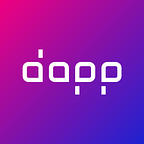The Best Way of ETH2.0 Staking, Custodial vs Non-Custodial?
Ethereum2.0 Mainnet is finally here. The first solid block on the Beacon Chain was successfully created. Have you participated in the Ethereum 2.0 staking?
If not, we’ve introduced 3 staking pools that make Ethereum 2.0 staking easy and accessible. They provide user-friendly ways for you to share the promising rewards of ETH2.0 staking.
But if you want to really stake like an expert, you need to learn more about those different ways of ETH2.0 staking. In this article, we are going to cover all of your staking options below.
DIY Staking
If you just want to participate in Ethereum2.0 individually, there are some basic yet complicated technical requirements that you have to meet. A DIY staker must run an Ethereum1.0 node, Beacon Chain node, and own a Validator.
To fully explain all of the technical steps, we might need to write another article. Basically, a DIY staker will need to be familiar with using and sending ETH on Ethereum1.0, as well as ensure an uninterrupted connection to Ethereum1.0 and the Beacon Chain. In addition, it is important for you to apply extra security measures in order to protect your private keys and all the assets on the blockchain.
So DIY staking is not recommended to normal users like me and you. What we need, is helpful staking services, who can break the technical barriers for us.
Staking Services: Custodial vs Non-Custodial
Staking services are provided by third parties. So before you connect your wallet to them, you definitely need to understand how they work and how secure they are. This is all about how staking services manage your private keys.
There are 3 different types of services: custodial, semi-custodial and non-custodial services.
Usually, the more ‘custodial’ the service, the higher the risks you may face. Because custodial services hold your private key and control your assets. Just the same as custodial crypto wallets(How to Find the Best Crypto Wallet?) or centralized exchanges (How to Find the Best Cryptocurrency Exchange?). If the service provider gets hacked, come across technical problems, or the project team just run away with the private keys, your tokens are nowhere to be found.
So you need to select carefully. Then what staking services are out there, what types do they belong to and how do they compare? To get access to these staking services, you can search “Ethereum 2.0” on dapp.com.
It’s obvious from the chart above that among all the Ethereum2.0 staking services, Blox Staking is the only open-source, fully non-custodial staking platform for Ethereum 2.0.
Staking with Blox requires no key sharing. In fact, you have a dedicated remote signer stored directly on your own cloud account. The remote signer, KeyVault holds your private validator keys and executes duties sent from the blockchain via Blox Infra nodes. You just manage your validator by using Blox’s Desktop App, where you can check a performance monitoring dashboard.
- The advantage of Blox Staking: Fully non-custodial, easy to use, advanced slashing protection, security-driven.
- The disadvantage of Blox Staking: Current min. staking deposit is 32 ETH. Soon to change with the release of staking pools.
Blox’s Eth2 Decentralized Staking Pools, which is scheduled to launch Q3 2021, are designed to tackle and resolve the following challenges:
- Enable staking of less than 32 ETH — you’ll be able to stake as much or as little ETH as you’d like.
- No coding, or technical installation processes — reduce the technical barriers to stake.
- Instant liquidity and withdrawals — made available through a dedicated ERC20 token that is strictly decentralized and used solely for the purposes of staking.
- Completely decentralized and trustless — no single, centralized point of failure.
When you are seeking a higher interest rate or better staking service, don’t forget that security is the essential thing.
